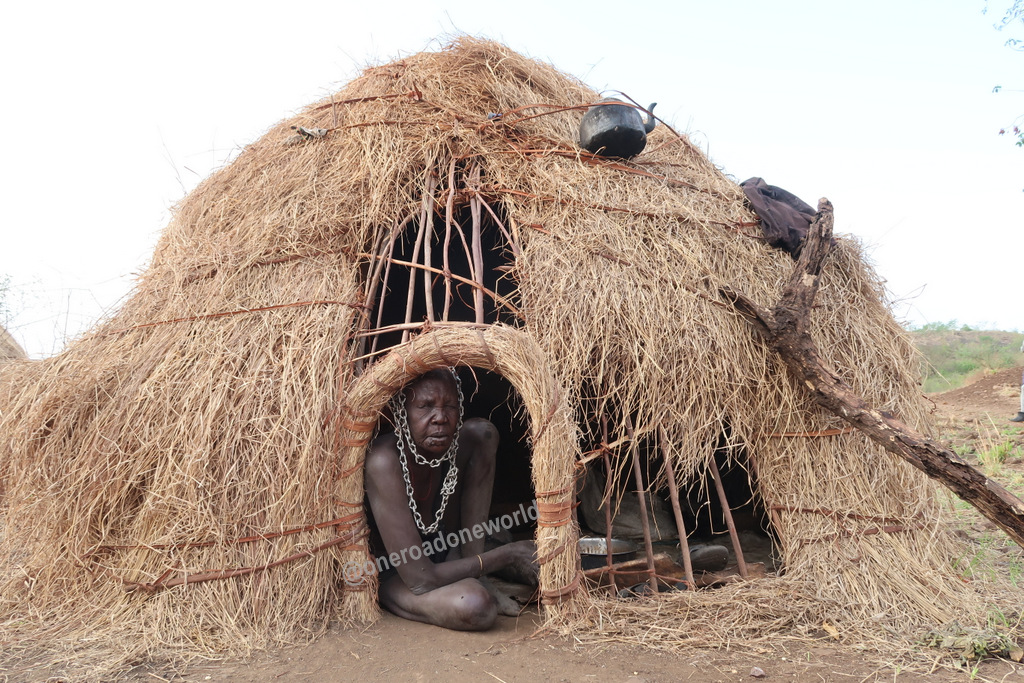When we were planning our trip around Africa by motorcycle the Omo valley, Ethiopia was in our top list to see in Africa. because We read a lot about Ethiopian tribes. We traveled in Africa more than 1.5 years to learn their culture, lifestyle, language…etc. So, you can imagine why we went to Omo valley. 🙂
We stayed 10 days in the Omo Valley. We wanted to share what we saw and learn about tribes, how you can travel by yourself backpack, motorcycle, car…etc.
Please, keep in your mind what we are writing about Ethic groups culture, lifestyle…etc., we learned in the region from local people or guides.
Let’s start with the Omo Valley and tribes (ethnic groups) info and than how you can travel by bus or your own vehicle, how much money you need.
Ethiopian Tribes : Omo Valley Ethiopia
The biggest city in the Omo Valley is Jinka this is the capital city of the region. The Omo valley is a very famous area in Ethiopia and also well known in whole Africa. It is like another world what we know about life and culture because of the ethic groups. They have 16 different ethic groups in the Omo region. The biggest ethic group is the Ari with a population around 300.000, and smallest is Karo (Kara), with a population of 1.600, in the Southern Omo Valley. The most famous ethic groups are Mursi, Ari, Hammer, Kara(Karo), Banna, Thsemay, Bashada and Daasanach because they are the more reachable ethic groups (tribes) in the Low Omo Valley. Also, you can see or hear a lot about Nyangatom and Surmi(Surma) ethic groups (tribes) but it’s not so easy to find a tour or transport to reach them because they live close to the South Sudan border. After Jinka, more known cities are Key Afar, Dimeka, Turmi and Omorate.

Which ethic groups (tribes) do live close to which cities?
Ari tribes is around Jinka
Banna and Bashada tribes (ethic groups) are around Jinka, Key Afar, Dimeka and Turmi
Hamer tribes is around Key Afar, Dimeka and Turmi
Daasanach (Dashech also called Dasenech) tribes is around Omorate.
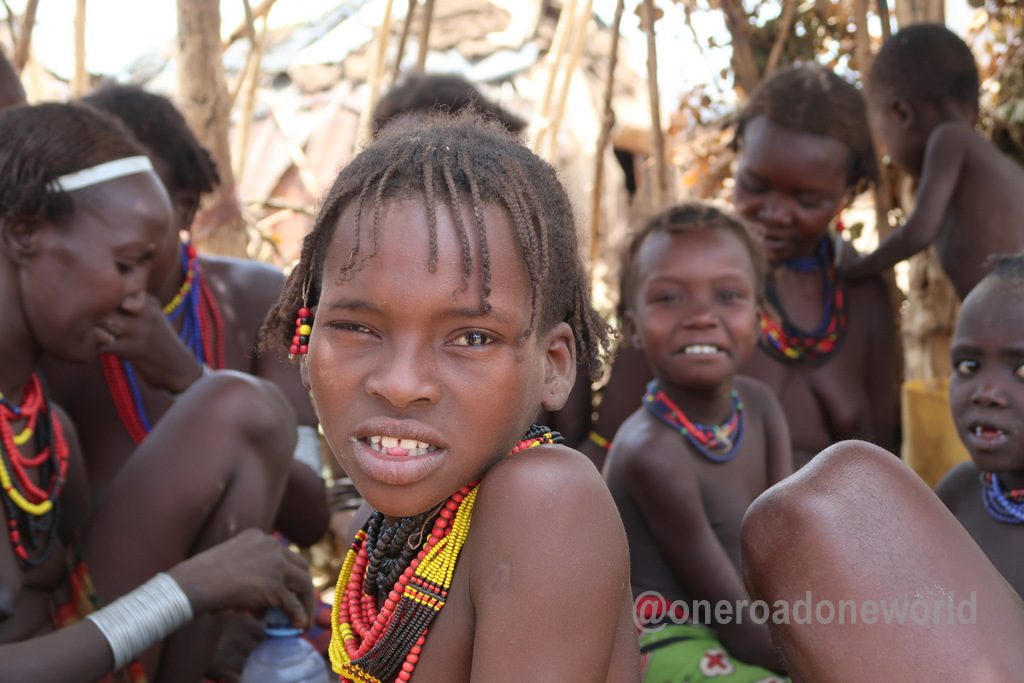
Dashnech people
Karo tribes is around Dimeka and Turmi. Easy to go from Turmi.
Mursi tribes is in Mago National Park, Jinka
Tsemay tribes is around Key Afar and Dimeka
Nyangatom is around the Omo river, close to South Sudan.
Surmi(Surma) is in the Omo National Park.
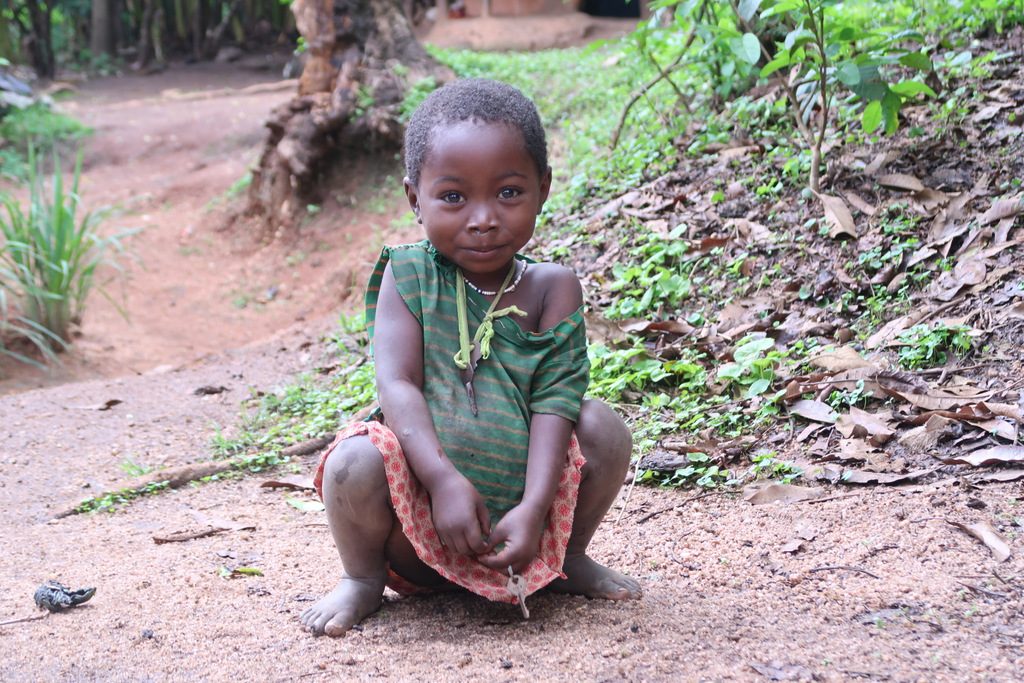
Little Ari kid
ARI TRIBES :
They live around Jinka and their population is around 300.000. They wear their traditional clothes on special days, wedding, funeral… etc. They are hard working farmers. They grow mostly coffee and sorghum. It is look like they can grow everything on their land. The make honey and their own alcohol. Cattle are important as well. They make their hammer, knife, ax, shelf etc. from any metal. Some women make ceramic to use and sell.

Ari tribes in Jinka
We asked our guide about Ari people wedding celebrate and how they choose their wife. He told us that the beauty is not important. What does her ability? When they decided to married he (or his father who had money) must pay 30.000 birr and cattle. How many cattle’s they will pay depend on the family negotiation. And wedding time his family must give blankets as well to her family, grandfather and mother, aunt and uncle. Each blanket is around 2000 birr.
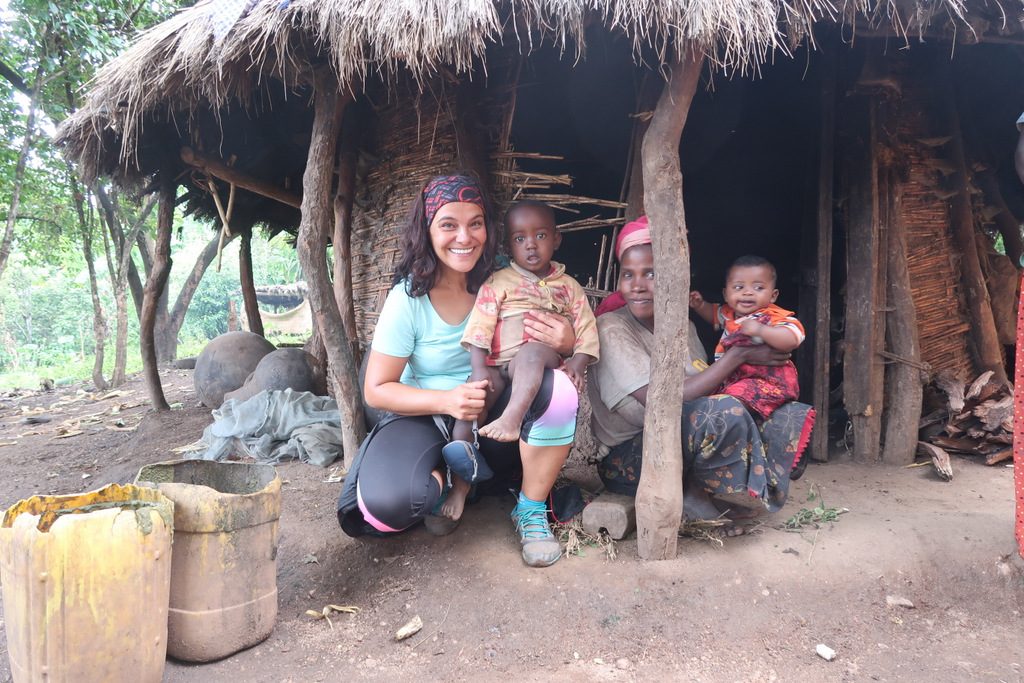
Ari people are so friendly…
Wedding day, the broom waits outside with a goat, families and the bride go inside. They can start to eat and enjoy the moment. After a while her father can go out to call the broom. He can give the goat to his father-in-law and than can go inside. They can eat and drink a lot, cut a lot of cattle’s to celebrate. They can get married more than one woman if they have enough money for it.
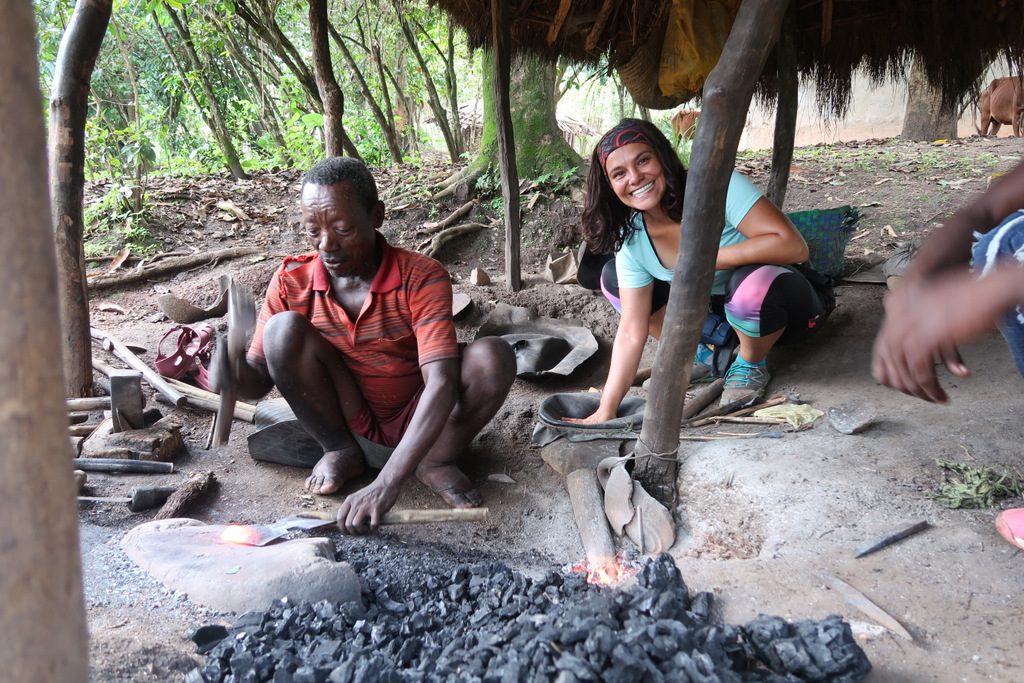
He is making an ax, Ari village
Also we wanted to learn about funeral ceremony if they have anything special. The body can wait maximum one year in the house for the ceremony. They cut a lot of cattle and cook food. How many people can go to ceremony they must have enough food for them, people need to be full to eat. So, they worked in their land until they have enough vegetable, sorghum…etc.
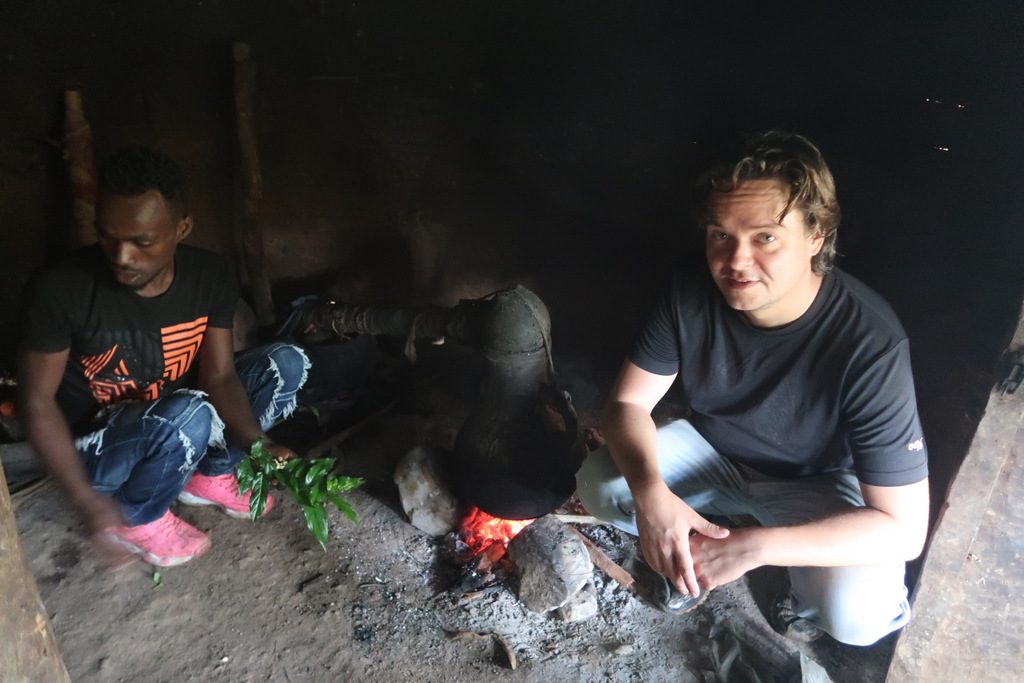
They were showing how they make alcohol
One thing was so interest for us to drink “ Coffee soup” We visited one of the Ari house. She collected coffee leafs, boiled with some spices and garlic. The taste was really good. Also we tried the traditional foods.
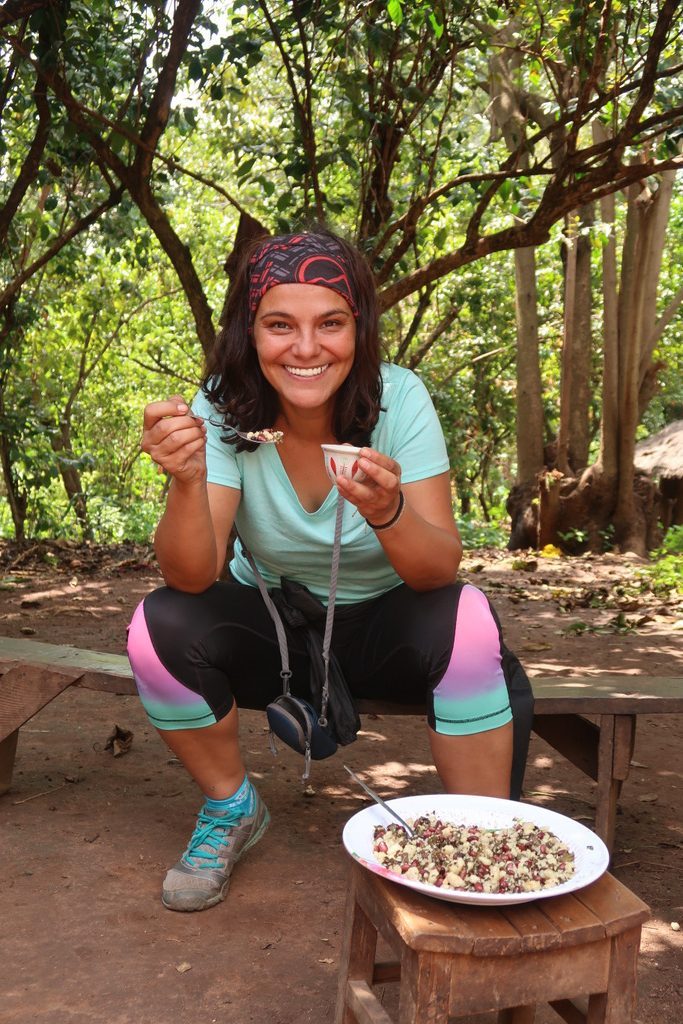
Trying coffee soup and local food
They showed us how they make their alcohol and gave us to taste. I am not sure about the taste it was so strong for me.
We also watched how they can make ceramic, tools and knifes. Their traditional house is a circle but now they have more square houses as well. Where we were Ari people were so friendly and welcome. We leaved from the village so happy.

Ari tribes house
MURSI TRIBES :
Mursi people live in the Mago National Park and their population is round 8.000. They are not a farmer, raising cattle is most important for them. They make their clothes from cattle skin and sleep on it as well.
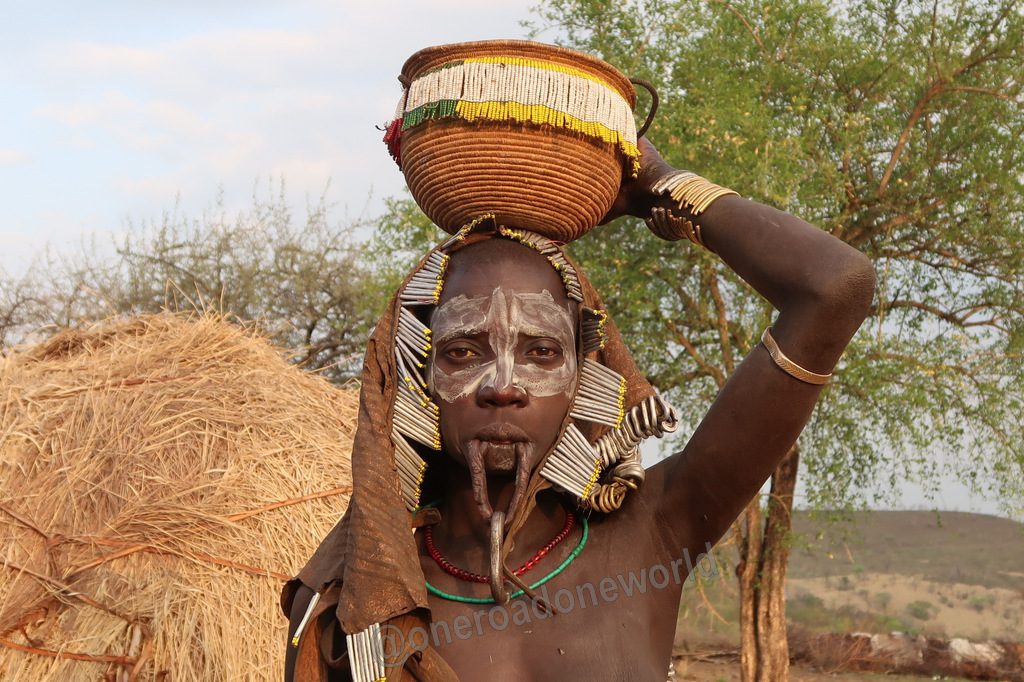
Mursi Tribe’s women
Mursi people are most known for the lips-plate by the women. The girl cut a hole in her lower lips when she’s a mid-teenager (around 15-16 years old.) They put a little wooden stick in it to don’t close the hole. Than they make to hole bigger and bigger slowly. The hole can be around 12 cm. They also pull out their four lower front teeth to make the lower-lip hole big. They made their lips-plates and paint what they want. They use plates if it is necessary because it doesn’t easy to eat and they need to keep their lips and plate with their hands all time, lips cannot carry the plate.
We are not sure still a tradition to have a large ear holes anymore because we saw some women has big ear hole some doesn’t. They cut a hole in the ear when they are five.

Mursi women with plate on low lips
They live in a small village. The house is small circle made of dry grass. Also, Mursi man tradition is (or was) stick-fighting. We are not sure if they still do because stick-fight is illegal now and they never do it in front of tourist anymore.
Surmi (or some people is called Surma) tribes life style, culture and women tradition is almost the same. So hard to understand which woman is belong to which tribe. But Surmi people live in Omo National Park and their population around 45.000. And they also grow Sorghum and maize. They don’t try to survive only with cattle like Mursi.
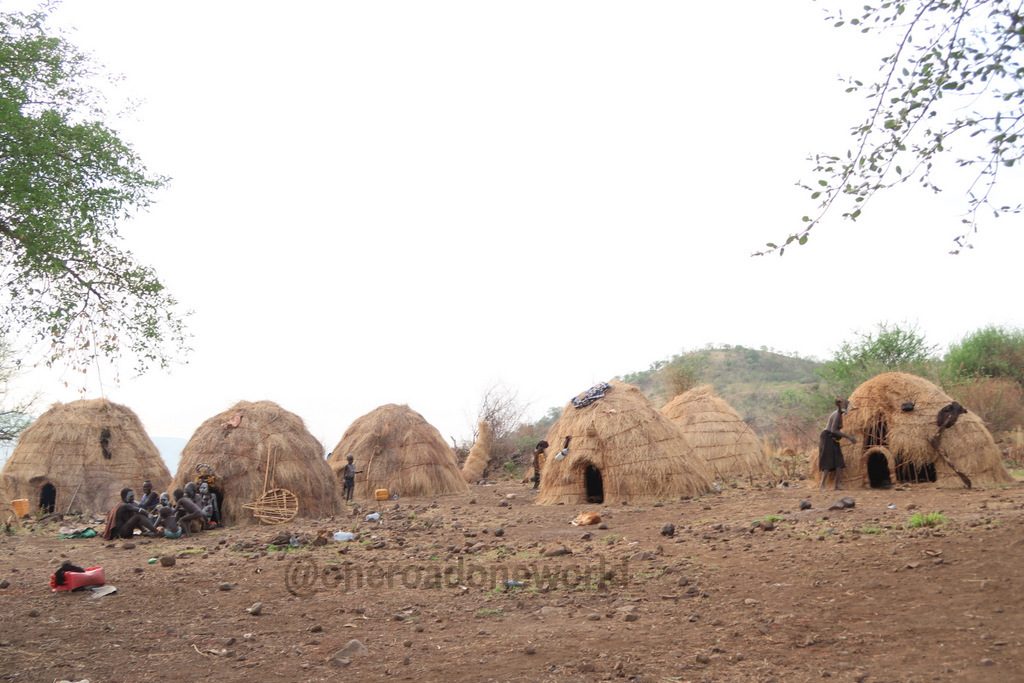
Mursi village in Mago park
HAMMER TRIBES :
They lives around Turmi and Dimeka, their population is around 47.000. They grow sorghum and maize, also some vegetables, raising cattle. Make honey and tobacco is one of the important things in their life. They are more known for their hairstyle, dance and bull jumping ceremony.

Bull jumping ceromny
Women mix ochre, water and a binding resin (like Himba women in Namibia) and than put into their hair. They wear leader, made from cattle.

Hammer tribes women
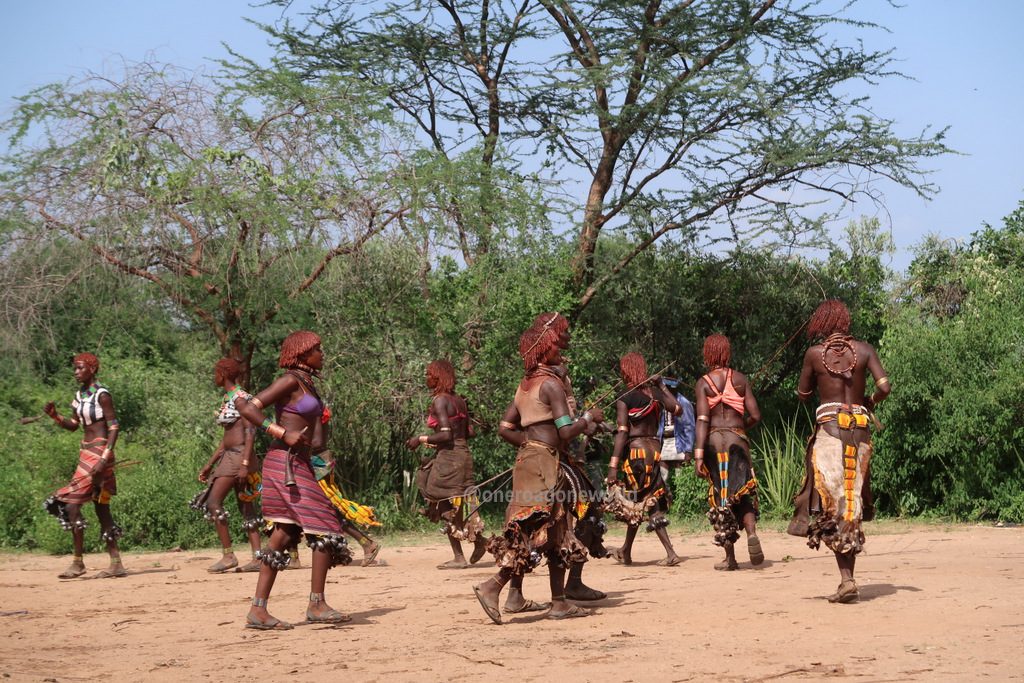
Women dance before bull jump
One of the important ceremonies is “Bull Jumping”. If a man doesn’t jump over the line of bulls he cannot become a man and can’t get married. The family decides when their son jumps. The boy can go to the ceremony when he is 13 to 30. Also, the family decides which son goes to “Bull Jumping” first. The ceremony starts with women dance.
And than men hit women (who relative with bull-jumping boy) back with stick. How bigger the scar is deep and bleeding it means to show how much they love their boy.
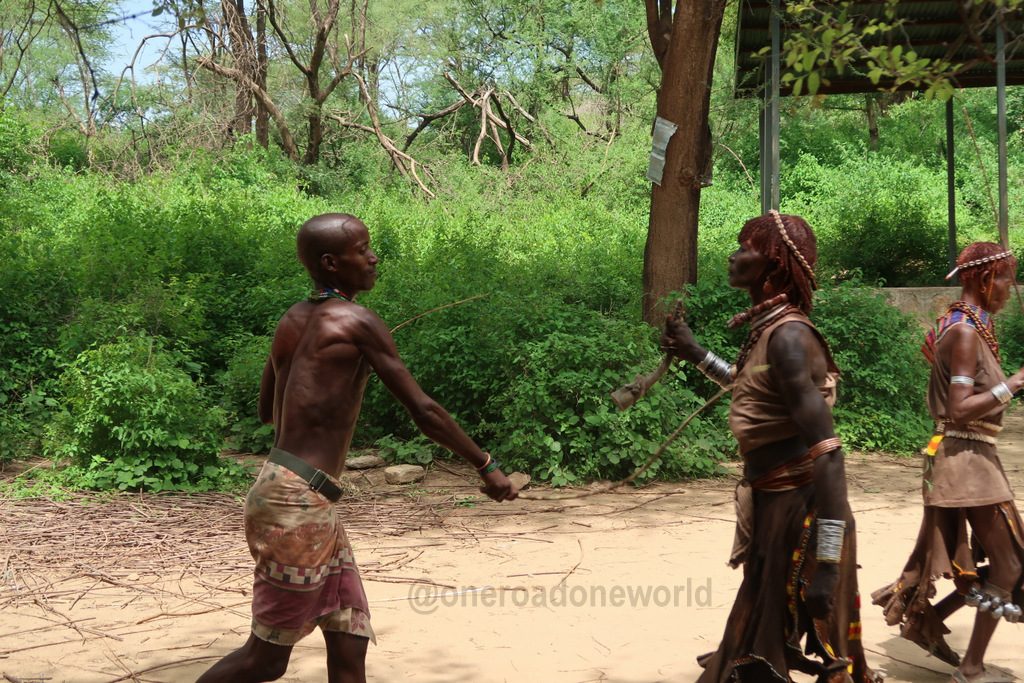 And than who support him when he jumps to the bulls. They paint their face. After that the bull-jumping boy gets totally naked and they pray together before the jump.
And than who support him when he jumps to the bulls. They paint their face. After that the bull-jumping boy gets totally naked and they pray together before the jump.
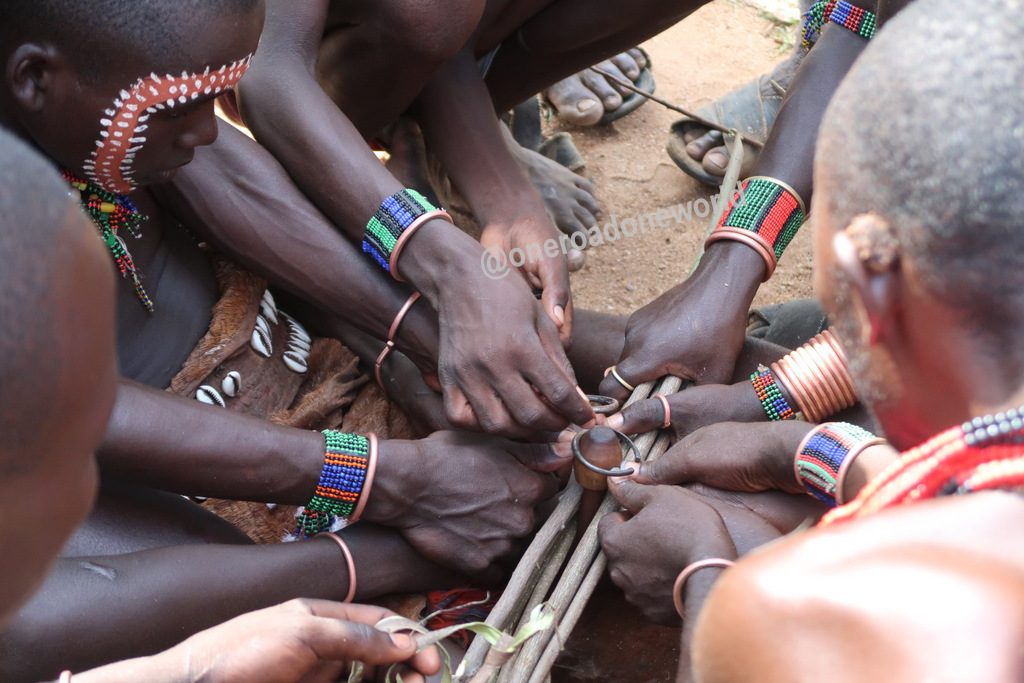
A lot of bulls come to the area and they can choose 8 to 15 bulls. The boy has to jump/run over all of them in one time. If he falls down they call him half-men (something like that) and he never have second bull-jumping ceremony. If he succeeds to pass all the bulls the first time he must turn around and do same thing four times.

Bull jumping time
We asked about Hammer tradition married how it is and how can choose their wife or husband. Unfortunately, the boy or girl cannot choose anything for the first marriage. His family chooses the wife for him. Also, the family pays everything for the wedding. If two families agree about the marriage his family gives 5 cows and around 30 cattle, goat and sheep. Also they pay for all the food and what they need for the wedding ceremony. Hammer tribes man can have two or three wife if he has money. He chooses the second and third wife but he needs to ask the first wife if she is agree about the next wife.
To be a first wife is an honor. When the women get married she started to carry some kind of special necklace to show she is the first.

First woman is first wife
The second and third woman has a necklace also but just metal one.
Banna and Hammer tribe lifestyle and tradition are so close each other. What do we know about the difference; Banna women can wear blue color but Hammer women don’t. Hammer like more dark color, not so much colorful. Also, Hammer Ethnic groups make a bull-jumping ceremony close to the river. Banna ethnic group make the ceremony in their village.

DAASANAC (DASHNECH) Tribe
Daasanach people live around the Omo River, between Omorate and Lake Turkana, the population is around 45.000 and they are the poorest Ethnic group in the valley and the government helps them. They grow the same as other tribes, maize and sorghum. Also Dashnech (Dasenech) tribe people like tobacco so much and grow it. But their main thing is a cattle.

Dashnech(Daasanach) people
Dasenech women like colorful necklace so much and they change their hair style when they are single, married or pregnant.

She is getting married and changing hair style
Also they make necklace from plastic or bottle tops (caps) for their kids. If a man kills one of their enemies to protect the village or his cattle he becomes a hero and his sister makes a tattoo on her shoulder.

She is sister of Hero, Dasenech tribe
It was look like they love alcohol so much. We were there in the morning and almost everybody was drinking in the village include little kids and baby goats. But they don’t make their own alcohol they just buy from other tribes.

Daasanach (Dashech also called Dasenech) village, Omorate
KARO (KARA) TRIBE :
Karo people live northwest of Turmi. Their population is around 1500 and they have three villages, which are Gorcho, Dus and La Bok. Karo tribe tradition is to paint their body with white color. Some women can use different color for their face. They also grow sorghum and maize, the cattle are important for their life.

Karo people village
We went to Gorcho to visit them but we didn’t like the people behavior. 3-4 guys were sitting in front of the village door and drinking beer in the morning. They wanted double than other villages to enter. We didn’t sure that the money will go to their beer or the village. Already all women and kids came to the door when we were talking guides. We decided to don’t enter and turn back. We couldn’t take any photo but we already saw the village and people.

Gorcho village entry
OMO VALLEY MARKETS:
Almost all towns have markets days. They are so colorful and possibility to see some tribes there if you don’t want to go each village and pay it can be good opportunity to see them in one place.
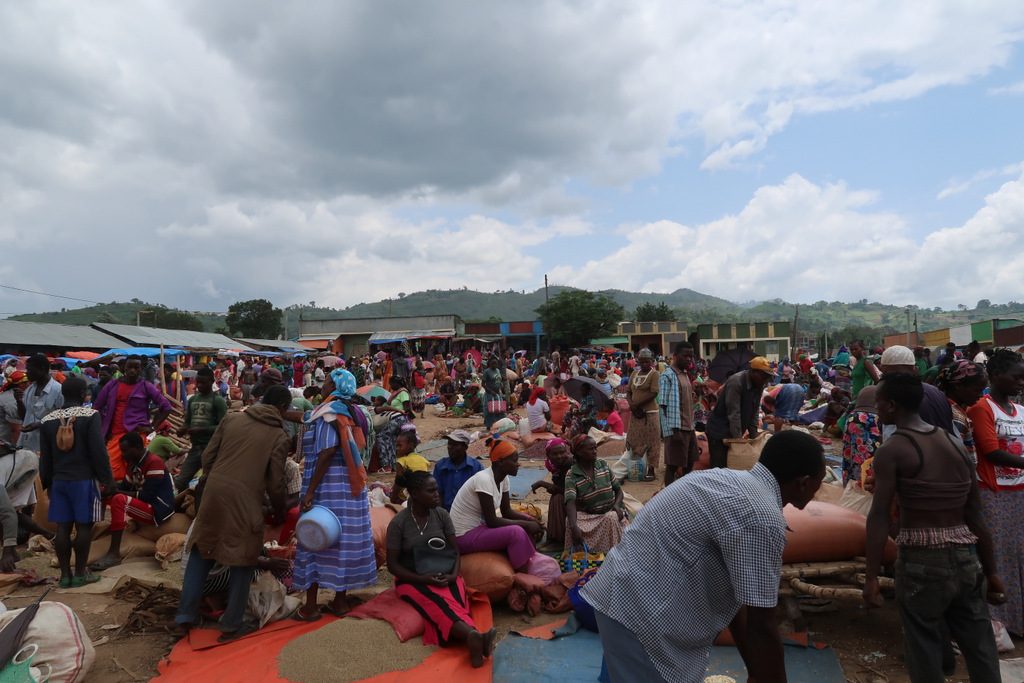
Jinka Market
Jinka Market is on Tuesday and Saturday. Saturday is the biggest market. You can find all fruits, vegetables…etc. Of course, most of them are Ari people. In the cattle area, you can see Mursi people because they come to the market to sell their cattle.
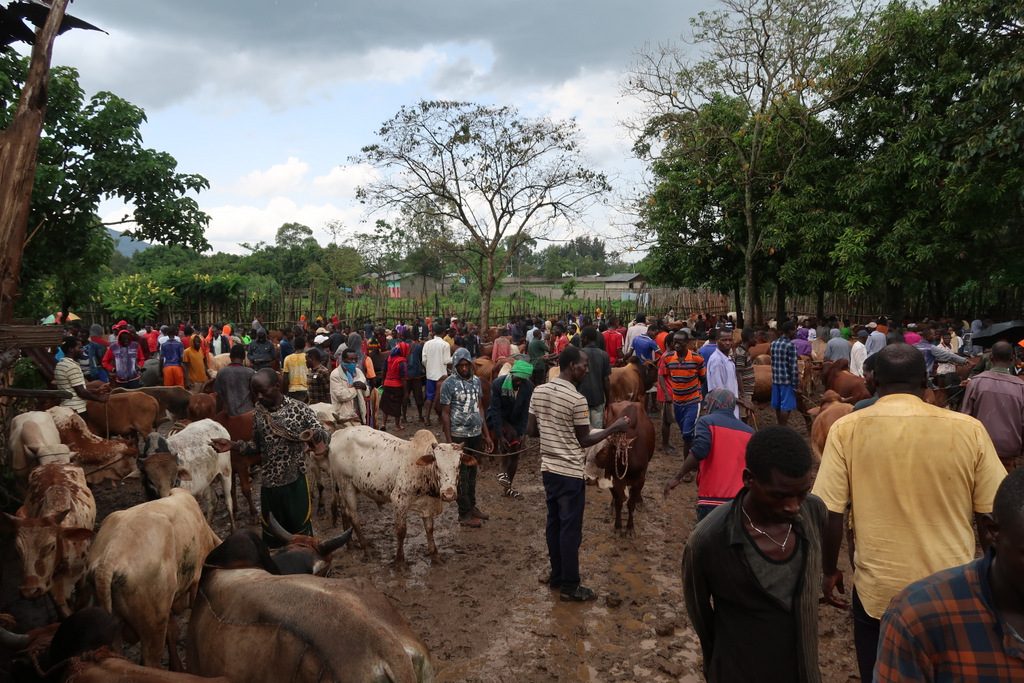
Key Afar Market is on Thursday. It is not rich like the Jinka market about fruit and vegetables. They sell more sorghum, maize, cattle also clothes and accessories. But it is chance to see Tsemay, Banna and Hammer tribes there and take a photo. Because some of them go to the market with traditional clothes for photos and make money.

Thsemay men, Key Afar Market
Dimeka Market is on Tuesday and Saturday. Most colorful market is on Saturday because Tsemay, Banna, Hammer, Bashada and Karo people go to the market. So, it can be a chance to see Karo people there. To be honest, we didn’t go to Dimeka market after saw everything.
Turmi Market (Hammer Market) day is Monday and Thursday. It is Hammer market but possible to Bashada people as well. They sell cattle, maize, sorghum, tobacco and honey, also a lot of accessories. If you are not interest to go to a Hammer village you can see Hammer people anytime in Turmi, especially in the market and take photos.
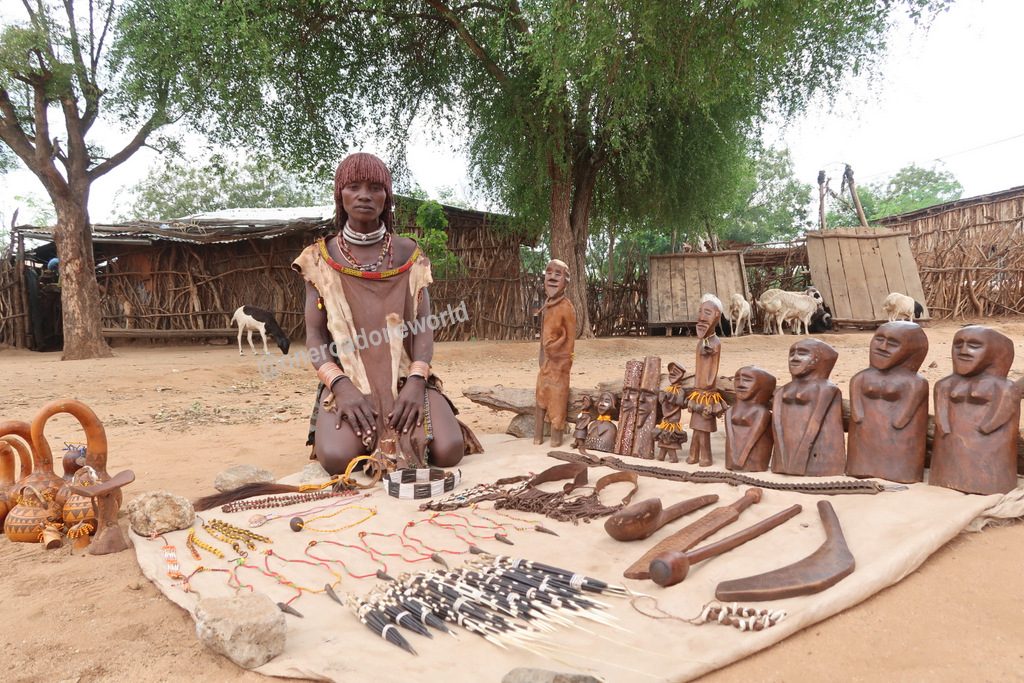
Hammer market, Turmi
Omorate Market (Daasanach – Dashnech); they told us Daasanach people has Omorate Market on Tuseday and Saturday. We were there on Tuesday and asked everywhere include guides but nobody knows about the market.
Also Arbore, Giyo, Kangaten, Kako, Weyto and Hana Mursi towns (or village) have their own markets. But we didn’t go there so we have no idea about details. 🙁
If you are interest to visit Ethiopian tribes, it is the link you can find all detail to travel yourself
GS
